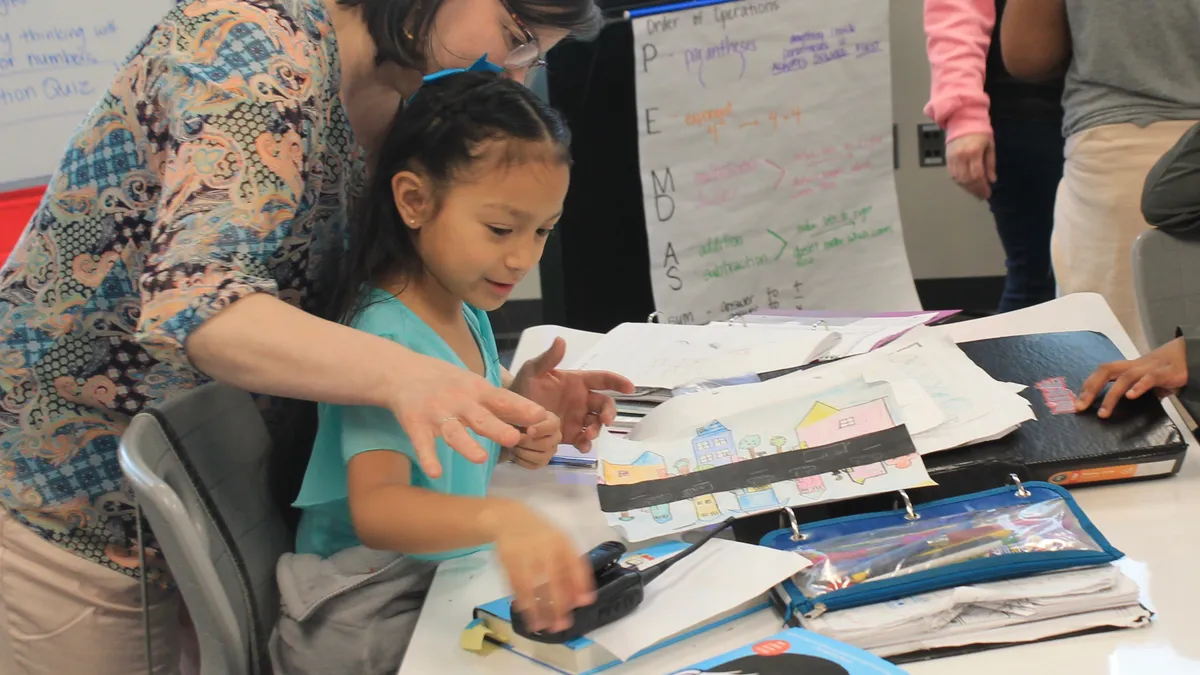Dive Brief:
- Students, particularly those with disabilities, may exhibit anxiety when schools reopen, with changes in routines, a new fear of germs, and trauma that may have been experienced during school closures among factors that could set some students back, District Administration reports.
- Teachers can ease the transition to in-person learning by reassessing curriculum to ensure there are no references to death, illnesses or other topics that may trigger fear during a pandemic in fiction books. If students express fear, teachers should validate their feelings but reassure them they are safe and give them a sense of control by reminding them what they can do to protect themselves, such as washing their hands.
- When anxiety strikes, educators can also consider brain activity games like Sudoku or trivia to redirect thoughts. Face coverings may also trigger anxiety because students with special needs might not be able to read facial expressions, so teachers should help students understand what others’ actions are saying. Giving positive attention on a regular basis can also preemptively counter negative attention-seeking behavior.
Dive Insight:
Re-acclimating students to the classroom will likely be challenging, both from the social-emotional angle and from an academic standpoint. Since schools closed in spring due to the coronavirus pandemic, an economic crisis and civil unrest have also occurred. How students were affected will determine the type of support they need as they re-enter school.
For the most part, administrators are focusing on providing students with SEL support as much as addressing learning loss. That means reorganizing the day to focus on relationship building and teacher professional development while also allowing for collaboration time.
Once students are comfortable, policy changes may also need to be made, including adding more days to the academic calendar, more hours to the school day and more before, after, and weekend school support. Principals need support in providing students wraparound services, which research shows help students heal faster after catastrophic events. Local school partners and civic leaders will need to work directly with principals, superintendents and other administrators so they know what support is needed.
A recent Learning Heroes survey shows parents are most concerned about their child’s lack of social interactions. Fifty-nine percent of the 3,600 parents and guardians surveyed say the lack of personal connections is their top school closure concern. Many parents now feel more connected to their child’s education, and 70% want to know how they can help their child make up what they missed.












